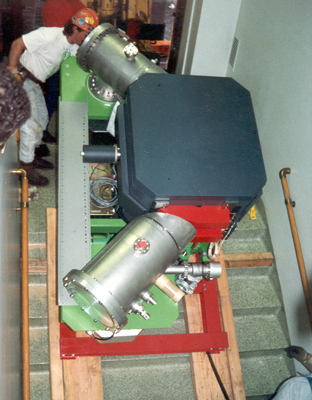Facility History
On a quiet campus, two days after Christmas 1992, the nation's first high sensitivity-high resolution ion microprobe was delivered to the UCLA Department of Earth & Space Sciences. The IMS-1270 was developed by CAMECA engineers in collaboration with UCLA scientists during the previous 2 years. Capital costs for the instrument were financed through grants from the W. M. Keck Foundation ($1M) and the NSF Instrumentation and Facilities program ($0.4M), matched by UCLA internal funds ($0.9M). Over the following year, we continued to identify and correct basic design bugs (some requiring substantial hardware modifications that have since been incorporated into later instruments) while developing new analytical approaches. In 1996, we were able to commission the laboratory as a national facility with the support of NSF's Instrumentation and Facilities Program. From the outset, our stated intention was to create a world-class facility for in situ microscale isotopic analyses of geologic materials and to provide access to its unique capabilities to the broader community to address important problems in earth and planetary science. Now, fourteen years since co-PI's Harrison and McKeegan initiated this project and nearly eight years since we began hosting the first of more than 200 NSF-sponsored scientists and students, our goals are the same. Our commitment to managing an open, effective, and scientifically innovative facility remains paramount.
